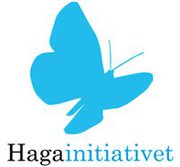Less and Better, and Together
https://www.klimatsmart.se/images/news/hagainitiativet180x167ha.jpg
As we at P&G are learning to reduce our climate impact, we explore two different strategies. First there is the “less” strategy – increasing efficiency, cutting out waste so using less energy or materials. This is always a good place to start, as there is often considerable low-hanging fruit to be gathered. However, once the low hanging fruit has gone, there can be diminishing returns if we just exploit this strategy. We still need to use energy and materials to provide goods and services to improve people’s lives, so there is a need for a second strategy – finding better materials and energy sources that have less greenhouse impacts. Moving from fossil-based energy and materials to renewable sources is one way to deliver this “better” strategy.
P&G has been implementing both “less” and “better” strategies in its overall effort to reduce the climate impacts of its products and operations. By increasing efficiency and using less energy in its own operations, P&G has more than halved the energy consumption and CO2 emissions associated with manufacturing a unit of product since 2002. Equally importantly, we have introduced compact, low temperature detergents that can wash brilliantly in cold water, helping consumers reduce their own energy use and greenhouse gas emissions.
But looking forward, we are increasingly looking at the “better” option too. On energy, our long term vision is to run our plants on 100% renewable energy, with a goal of 30% renewable energy by 2020. There is also a lot that can be done on material sourcing. Our vision is to eventually source 100% of all ingredients for products and packaging from renewable materials, sustainably sourced. Our goal for 2020 is to move 25% of our current spend on petrochemical-derived materials to sustainably sourced renewables. This can contribute significantly to greenhouse gas reductions. For example, we have already started to source polyethylene for our shampoo bottles from sugar cane. The sucrose in sugar cane is fermented into ethanol, which is converted to ethylene and polymerised into polyethylene.
Of course we need to check that this move to renewable sourcing actually does reduce greenhouse emissions – especially given recent reports on biofuels that suggest in some cases they might actually result in higher emissions. But an ISO-compliant, peer reviewed LifeCycle Assessment shows clearly that this use of sugar cane-based plastic reduces greenhouse emissions by more than 170%, and reduces fossil fuel consumption by over 70%. This is because the sugar cane actually absorbs CO2 as it grows, and a large part of the energy used to produce the plastic is from renewable biomass from the rest of the sugar cane plants.
Similarly, the fact that the sugar cane is renewable, does not automatically mean it is sustainably grown. We need to ensure that the sugar cane grown in Brazil does not result in deforestation, cause water shortages or impact food prices. We have worked with a range of partners, including NGOs, to develop a sustainability assessment tool to check for these potential issues. We went to Brazil to visit the fields, talk to the farmers and visit the mills, to confirm that the sugar cane was sustainably sourced and that the plastic provides tangible sustainability benefits.
As we move forward with more use of renewable materials in both product and packaging, we need to be aware of potential competition for land, water and energy, but if these are managed effectively, the “less and better” approach offers great potential to deliver on global climate commitments.
“Less and Better” are foundations of our approach, but then there is “Together” which is a fundamental responsibility that we feel, and adopt.
We are committed to play a role that is emerging with more and more clarity, for companies that operate across country boundaries and engage through our brands with millions and millions of consumers every day. Acting together helps impact on the significant challenges of our society and planet. Reducing climate impact is one of those challenges that cross country boundaries, and can only be addressed by society-science-corporations-government collaborations.
We at P&G believe that corporations are uniquely positioned to play their part in this transnational and cross-cultural change, and will continue to explore where and how best to play our part.
Skrivet av Luisa Delgado på Hagainitiativets blogg.

 World Economic Forum har utsett Spowdi till Top Innovator i dess Smarter Climate Farmers Challenge.…
World Economic Forum har utsett Spowdi till Top Innovator i dess Smarter Climate Farmers Challenge.… Statkraft lämnade förra veckan in anmälan om samråd, enligt 12 kapitlet 6§ miljöbalken, för att…
Statkraft lämnade förra veckan in anmälan om samråd, enligt 12 kapitlet 6§ miljöbalken, för att… Stena Recycling lanserar en ny digital tjänst som ska ge företag mer kunskap om hur deras…
Stena Recycling lanserar en ny digital tjänst som ska ge företag mer kunskap om hur deras… Två innovationsprojekt har banat väg för en ny satsning inom mikromobilitet och logistik i…
Två innovationsprojekt har banat väg för en ny satsning inom mikromobilitet och logistik i… Bevarandet av den biologiska mångfalden och ekosystemen har inte bara ett egenvärde, utan är…
Bevarandet av den biologiska mångfalden och ekosystemen har inte bara ett egenvärde, utan är… Nu på lördag den 9 september kl. 10-16 kommer vi vara med på Skillebyholms höstmarknad! Vi…
Nu på lördag den 9 september kl. 10-16 kommer vi vara med på Skillebyholms höstmarknad! Vi… Genom att välja ekologiskt i matbutiken kan stora mängder bekämpningsmedel och konstgödsel stoppas.…
Genom att välja ekologiskt i matbutiken kan stora mängder bekämpningsmedel och konstgödsel stoppas.… En förhållandevis liten andel av den nordiska industrin är i dag cirkulär och det finns stora…
En förhållandevis liten andel av den nordiska industrin är i dag cirkulär och det finns stora… När ansökningstiden nu löpt ut för årets upplaga av Startup 4 Climate, en av Europas största…
När ansökningstiden nu löpt ut för årets upplaga av Startup 4 Climate, en av Europas största… Biokraft passerade i torsdags en viktig milstolpe när den nybyggda anläggningen för flytandegörning…
Biokraft passerade i torsdags en viktig milstolpe när den nybyggda anläggningen för flytandegörning…






